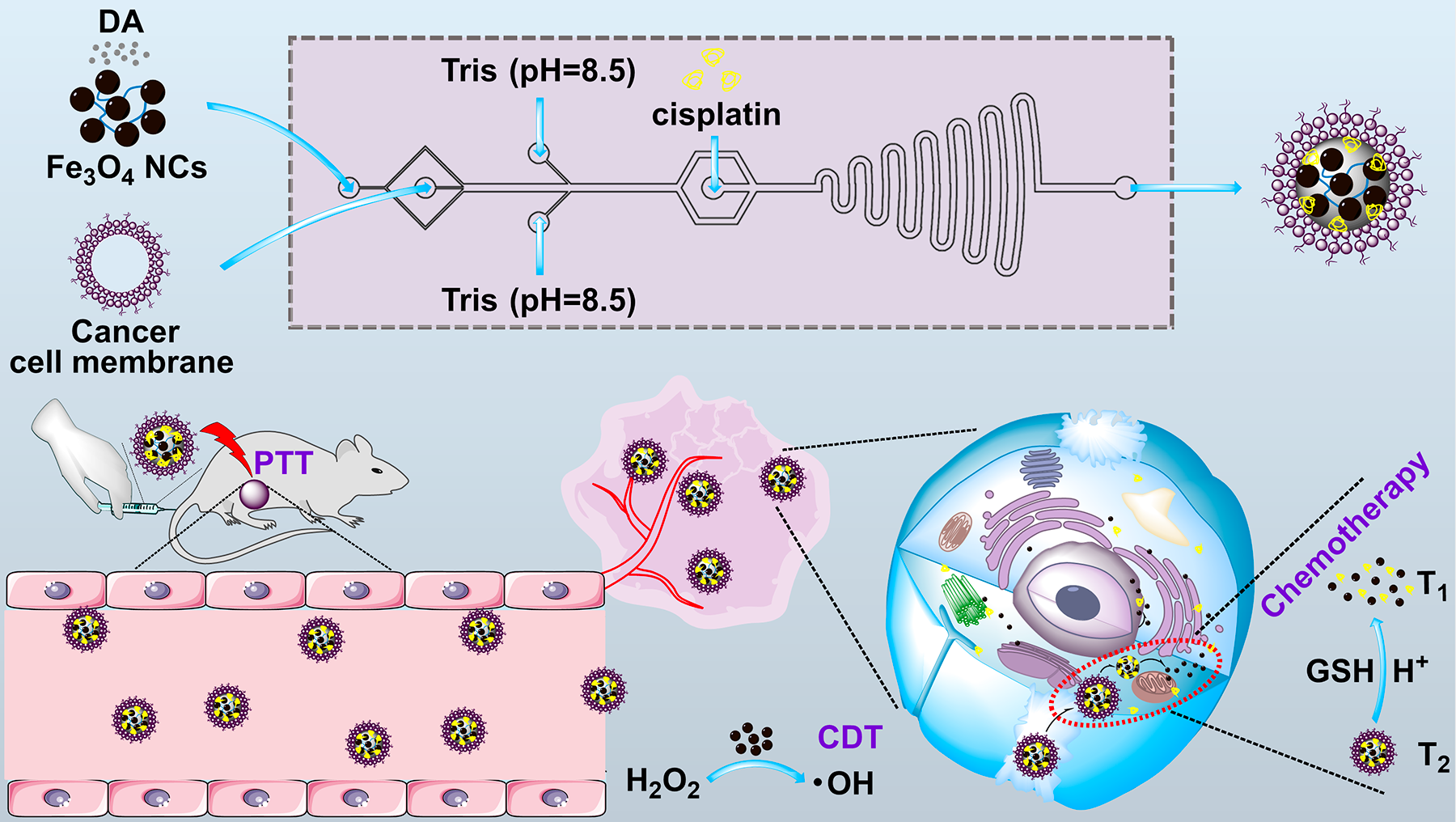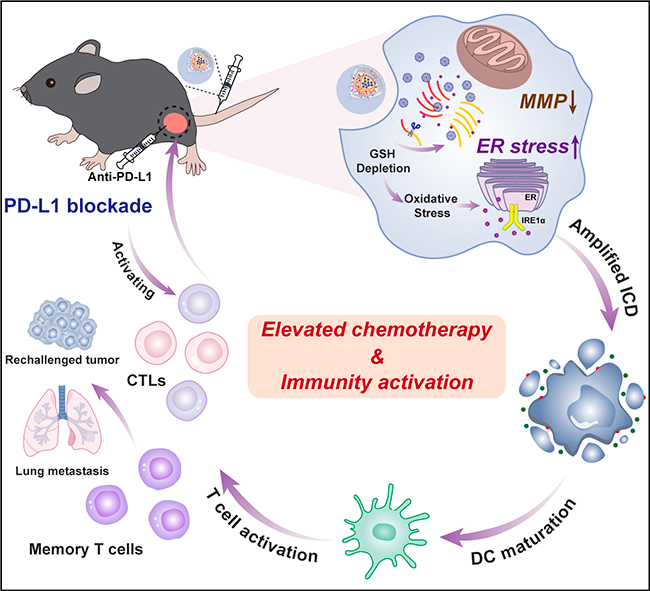The research team headed by Prof. Shi Xiangyang at the College of Biological Science and Medical Engineering has achieved a series of significant research results on the theranostic nanomedicine for cancer.
The team, based on a microfluidic synthesis approach, prepared FDPC NCs coated with polydopamine, loaded with the cisplatin and further camouflaged with cancer cell membranes(CCMs) for tumor tri-mode photothermo-chemo-chemodynamic therapy by dynamic tumor microenvironment (TME)-responsive MR imaging(Fig.1). The research paper, Microfluidic synthesis of intelligent nanoclusters of ultrasmall iron oxide nanoparticles with improved tumor microenvironment regulation for dynamic MR imaging-guided tumor photothermo-chemo-chemodynamic therapy, was published in Nano Today. Yang Rui, a doctoral student, is the first author, and Prof. Shi is the corresponding author.

(Fig.1)
The research sheds light on the controllable preparation of high-quality nanomedicinesand precision tumor theranostics.
To further investigate the advantages of combination therapy with immune checkpoint blockade(ICB), the team has designed a redox-responsive nanomedicine formulation based on phosphorus dendrimer-copper(II) complexes (1G3-Cu)- and toyocamycin (Toy)-loaded polymeric nanoparticles (GCT NPs) for chemotherapy-potentiated tumor immunotherapy(Fig.2). The paper titled "Biomimetic Polymeric Nanoparticle-Mediated Chemotherapy Potentiates Enhanced Tumor Immunotherapy via Amplification of Endoplasmic Reticulum Stress and Mitochondrial Dysfunction" was published inAdvanced Materials. Guo Yunqi and Fan Yu, two doctoral students, are the co-first authors, and Prof. Shi and Shen Mingwu are the co-corresponding authors.

(Fig. 2)
The GCT@CM NPs prepared by the team provide insights into the chemotherapy-potentiated tumor immunotherapy through different mechanisms or synergies.
Paper link: https://doi.org/10.1016/j.nantod.2022.101615


